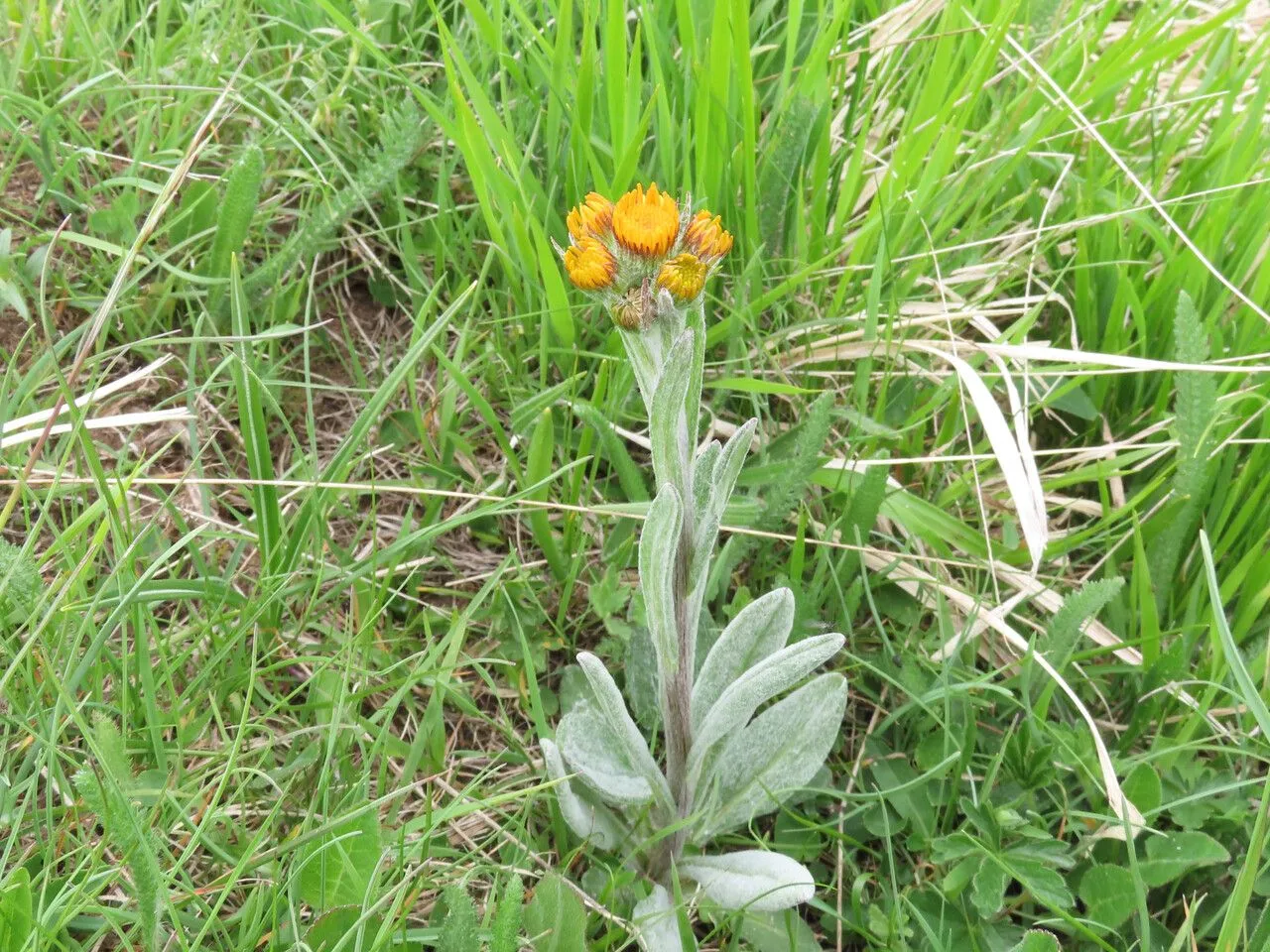
Author: (L.) Holub
Bibliography: Folia Geobot. Phytotax. 8: 173 (1973)
Year: 1973
Status: accepted
Rank: species
Genus: Tephroseris
Vegetable: False
Observations: Europe to Japan and N. Iran, Alaska
Field fleawort, scientifically known as Tephroseris integrifolia, is a remarkable plant species belonging to the family Asteraceae. This hardy herbaceous plant has a broad native range that stretches from the idyllic meadows of Europe, through vast expanses of Asia, reaching as far as Japan and Northern Iran. Interestingly, it has also been observed in the wilds of Alaska, showcasing its adaptability to diverse climates.
The defining characteristics of the Field fleawort include its slender, erect stems and modest height, which typically reaches between 10 to 30 centimeters. The foliage is composed of elongated, integrifolious leaves that possess a slightly glossy texture and are often covered with fine hairs, giving the plant a somewhat silvery appearance.
During its flowering period, Field fleawort produces a charming array of small, yellow flowers that are arranged in loose clusters at the top of the stems. Each flower head comprises numerous tiny florets, which together create a vibrant display that is not only aesthetically pleasing but also plays a crucial role in the local ecosystems. The inflorescences attract a variety of pollinators, including bees and butterflies, thereby supporting pollination processes vital to the reproductive success of many plant species within its habitat.
Despite its unassuming size, Tephroseris integrifolia has been the subject of botanical interest and study, as documented in the literary work referenced in Folia Geobotanica et Phytotaxonomica in 1973 by (L.) Holub. The plant’s resilience and its ability to flourish across a spectrum of geographical locations underscore its ecological importance and adaptability.
Field fleawort thrives best in open, sunny locations, often preferring well-drained soils. It can commonly be found in grasslands, open woodlands, and alpine regions where its growth is robust yet controlled, sometimes forming small patches that add to the biodiversity of the landscape. Gardeners and horticulturists who appreciate its subtle beauty and ecological benefits may cultivate it as part of wildflower meadows or naturalized garden settings.
In conclusion, Tephroseris integrifolia or Field fleawort is not just a plant of botanical interest but an integral component of its native ecosystems. Its wide geographical distribution and charming floral displays make it a species worth studying and conserving, ensuring that future generations can continue to witness its golden blooms gracing a multitude of natural habitats.
Dan: bakke-brandbæger, bakke-fnokurt
Deu: steppen-greiskraut
Swe: fältnocka, nordnocka
Eng: field fleawort
Sme: davvespiinnut
Cym: chweinllys y maes, chweinllys y morfa
En: Field fleawort
Be: Старасцень сунэльналісты
Cs: Starček celolistý
Da: Bakke-brandbæger, Bakke-fnokurt
Et: Lood-ristirohi
Fi: Pikkukarvakko
Fr: Séneçon orangé, Tephroséris à feuilles entières, Séneçon à feuilles entières
De: Steppen-Aschenkraut, Steppen-Greiskraut, Ganzblättriges Aschkraut, Ganzblättriges Kreuzkraut
It: Senecione rosulato
Se: Davvespiinnut
No: Finnmarkssvineblom
Sv: Fältnocka, Nordnocka
Cy: Chweinllys y maes, Chweinllys y Morfa
© copyright of the Board of Trustees of the Royal Botanic Gardens, Kew.
Taken Jul 24, 2014 by Tela Botanica − Yoan MARTIN (cc-by-sa)
Taken Jul 24, 2014 by Tela Botanica − Yoan MARTIN (cc-by-sa)
Taken Jul 24, 2014 by Tela Botanica − Yoan MARTIN (cc-by-sa)
Taken Jun 25, 2022 by Vittorio Basso (cc-by-sa)
Taken Jun 5, 2021 by Emanuele Santarelli (cc-by-sa)
Taken Jul 9, 2021 by Hester vanG (cc-by-sa)
Taken Jul 13, 2021 by Renaud Brochiero (cc-by-sa)
Taken Jun 5, 2021 by Emanuele Santarelli (cc-by-sa)
Taken Jul 13, 2021 by Renaud Brochiero (cc-by-sa)
Taken Jul 24, 2014 by Tela Botanica − Yoan MARTIN (cc-by-sa)
Taken Aug 15, 2010 by Photoflora – Benoit BOCK (©)
Taken Aug 15, 2010 by Photoflora – Benoit BOCK (©)
Taken Jul 15, 2008 by Photoflora – Benoit BOCK (©)
Taken Jul 15, 2005 by Photoflora – Jean-Luc TASSET (©)
Taken Jun 5, 2021 by Emanuele Santarelli (cc-by-sa)
Taken Jun 19, 2019 by MICHEL DUSSERE (cc-by-sa)
Taken Jul 2, 2019 by MICHEL DUSSERE (cc-by-sa)
Taken Aug 15, 2014 by Photoflora – Benoit BOCK (©)
Taken May 12, 2007 by Martin Bishop (cc-by-sa)
Taken Jul 24, 2014 by Tela Botanica − Yoan MARTIN (cc-by-sa)
Taken Jul 15, 2008 by Photoflora – Benoit BOCK (©)
Taken Aug 15, 2010 by Photoflora – Benoit BOCK (©)
Taken Aug 15, 2012 by Photoflora – Benoit BOCK (©)
Taken Jan 1, 1970 by Photoflora – L’Abbé COSTE (©)
Taken Jan 1, 1970 by Photoflora – L’Abbé COSTE (©)
Taken Jul 15, 2005 by Photoflora – Benoit BOCK (©)
Ph maximum: 7.5
Ph minimum: 7.0
Light: 6
Atmospheric humidity: 6
Soil nutriments: 3
Family: Myrtaceae Author: (F.Muell.) K.D.Hill & L.A.S.Johnson Bibliography: Telopea 6: 402 (1995) Year: 1995 Status:…
Family: Rubiaceae Author: Pierre ex A.Froehner Bibliography: Notizbl. Bot. Gart. Berlin-Dahlem 1: 237 (1897) Year:…
Family: Sapindaceae Author: Koidz. Bibliography: J. Coll. Sci. Imp. Univ. Tokyo 32(1): 38 (1911) Year:…
Family: Asteraceae Author: A.Gray Bibliography: Pacif. Railr. Rep.: 107 (1857) Year: 1857 Status: accepted Rank:…
Family: Fabaceae Author: Medik. Bibliography: Vorles. Churpfälz. Phys.-Ökon. Ges. 2: 398 (1787) Year: 1787 Status:…
Family: Aspleniaceae Author: (Cav.) Alston Bibliography: Bull. Misc. Inform. Kew 1932: 309 (1932) Year: 1932…